India Art Fair: Present Continuous
The India Art Fair returns with the fantastical, familiar, political and the ecological
 Avantika Bhuyan
Avantika Bhuyan
 Avantika Bhuyan
|
24 Jan, 2019
Avantika Bhuyan
|
24 Jan, 2019
/wp-content/uploads/2019/01/Presentcontinuous1.jpg)
A ROOM ENGULFED in fog, where one can voice one’s deepest fears; a pop- up concept store offering products designed by contemporary artists; a series of unique works in beeswax; exploration of digital mediums; and a showcase of the world’s leading artists such as Ai Weiwei and Wolfgang Tillmans—with a series of projects and exhibits such as these, the 2019 edition of the India Art Fair seeks to paint a fresh portrait of art in Southeast Asia.
The four-day event has, for more than a decade, heralded the city’s cultural calendar. However, last year, the tenth edition of the fair boasted of a series of firsts: a new leadership under director Jagdip Jagpal, strengthened programming and introduction of segments such as the Arts Project space. But if the previous edition was about ‘rejuvenation’, 2019 is all about continuity— about persisting with the strands of thoughts which took root last year, and which connect various aspects of the fair, both old and new. “Last year, the minute I walked into the fair, I realised that we should have had a bookshop. So, we are putting that in this year. Also, we are bringing in a strong performance art programme with artists such as Sajan Mani, Yasmin Jahan Nupur and Mithu Sen,” says Jagpal.
This year CMYK Bookstore with Taschen (leading art-book publishers) will bring a selection of books on the visual arts, along with a specially curated range of signed and limited edition books from Taschen that are tributes to few of the most important artists of all time, such as Annie Leibovitz.
In sync with last year, this edition too will see 70 per cent space reserved for Indian galleries and 30 per cent for those from overseas. The list of exhibitors has been pruned further, from 78 in 2018 to 75 this year, with the names ranging from Galerie ISA and Chemould Prescott Road (Mumbai) to Shrine Empire and PhotoInk (Delhi) to Sokyo Gallery (Kyoto), Aicon Gallery (New York) and Lukas Feichtner Galerie (Vienna), among a host of others. “The focus is on quality and the manner in which art is displayed. Also, we have made the sponsorship element as subtle as possible,” says Jagpal. Hailing from across 24 Indian and international cities, these galleries will present a selection of works, spanning mediums and formats.
To ensure that the Modernists and their stories are better represented, one will see participation by galleries such as DAG and Dhoomimal, and works by artists like Raja Ravi Varma, Tyeb Mehta, FN Souza and Ram Kumar. Vadehra too will be showing Modern masters such as SH Raza alongside senior contemporary artists like Arpita Singh, Gulammohammed Sheikh, Nalini Malani, Shilpa Gupta and Rameshwar Broota. The highlights include new paintings by Atul Dodiya, Jagannath Panda, Sudhir Patwardhan and Broota, besides a bronze sculpture by NS Harsha and an installation by Gigi Scaria.
Contemporary art can be viewed within exhibits of galleries such as Nature Morte, whose booth has been split into three parts. The first features a presentation of a new body of work by Jitish Kallat, which is part of series being showcased in a solo show at Daniel Templon Gallery, Paris, until March 9th. ‘Much of Kallat’s work of the past ten years has engaged with systems of time-keeping and chronological structures. With these Palindrome Anagram paintings, we seem to be most attuned to a Geologic Time Scale, a calibration of dating that relates to the strata of sedimentary rock and soil that constitute the surface of the Earth,’ writes gallerist Peter Nagy in an essay about this new set of works. He further states: ‘While these new works begin with the factual data of scientific observation, technical diagrams, fossilized records, and botanical renderings, Kallat’s juxtapositions and aesthetic treatments bring them into the realm of Pseudoscience or perhaps even the Occult.’
The other end of Nature Morte’s booth will feature a solo presentation of vintage prints from older series by Dayanita Singh—black-and-white works from Go Away Closer and colour ones from Dream Villa and House of Love. These 20 prints constitute the last editions of these series, and this will be the final opportunity for collectors to acquire these images. And right in the middle of the booth will be a group show with works by four artists: Gauri Gill, Tanya Goel, Martand Khosla and LN Tallur.
“We are focusing on new collectors, helping them navigate the ecosystem when buying their first artwork,” says Jagdip Jagpal director, India Art Fair
Another interesting showcase is by Art Alive, which seeks to document the evolving practices of artists such as Sakti Burman, Manu Parekh, G Anjaneyulu and Baiju Parthan. The idea is to place their oeuvre within the dynamic realm of contemporary art, as it stands today.
This edition will also see a number of international galleries return to the fair, including David Zwirner from London and Aicon Gallery. There are a couple of debutantes as well, such as neugerriemschneider from Berlin, which will be showing Red, Green Kaleidoscope by Olafur Eliasson, who has been playing with light, temperature and spatiality in his large-scale installations. In December, his Ice Watch was displayed at the Tate, London, with a big block of glacial ice put to the task of moving viewers on the issue of climate change.
According to Jagpal, there is a stronger emphasis, this year, on giving people the opportunity to learn about art from the region. “We are focusing on new collectors, helping them navigate the ecosystem, and aiding their understanding of things to keep in mind when buying their first artwork,” she says. Hence, the Forum segment has been designed as a platform to encourage opportunities for the younger generation. One will see writer-researcher-curator, Sitara Chowfla, don the role of a guest curator and celebrate critical experimentation. The Forum projects will have a series of talks and performances by artists extending into the main gallery halls. A significant one is When All Roads Are One by New York-based artist-designer Ghiora Aharoni. “We have a couple of significant book launches and signings. And also, artist memorial talks, such as the one that Prateek Raja [of Experimenter] is doing about Krishna Reddy and Tunty Chauhan of Threshold Art gallery about Priya Ravish Mehra,” says Jagpal. Then, there is the Hockey talk led by David Hockney’s friend and curator, Edith Devaney, and also What I did Last Summer by Idris Khan. Another change is that instead of the usual panels, the talks this time around will be more case study-led, with more time for questions.
As always, institutions such as the Foundation for Indian Contemporary Art (FICA) and the Kiran Nadar Museum of Art (KNMA), Serendipity Arts Foundation and Nepal Picture Library will be present with their share of programming. FICA will be presenting a project by Sudarshan Shetty, who is collaborating with two other artists, Aradhana Seth and Ruchi Bakshi Sharma. ‘While Aradhana will set up a photo booth with a scenography of a popular tourist place for people to get themselves photographed, Ruchi will run workshops for children to make toys with paper. I will set up a booth with small sculptures, which can be won by the fair visitors by throwing a ring over them,’ says Shetty in a note.
This year will see Bengaluru-based Museum of Art and Photography (MAP)—which focuses on education, accessibility, awareness and conservation through loans from the collection, workshops and lectures—attend the fair for the second time. In sync with its overall curatorial philosophy, at the fair too MAP seeks to break down boundaries between the different disciplines in its collection, and between what’s been considered as ‘low art’ and high art’, or ‘contemporary art’ and ‘tribal art’. According to Amit Kumar Jain, curator of the show, the MAP booth will look at works by Jyoti Bhatt, Jangarh Singh Shyam and J Swaminathan in a single curated space, thus looking at how these artists were inspired by the traditions of Madhya Pradesh, and how their practices intertwined and evolved.
The idea is to get works that most Indian audiences might not get to see otherwise. “To showcase the future of art, we are pleased to work with the Inlaks Shivdasani Foundation, which will be showing works of recent awardees, in addition to those by some of its fantastic alumni. People need to see the value of building museums and finding art education,” says Jagpal.
If the 2018 Fair was about ‘Rejuvenation’, then 2019 is all about ‘Continuity’— about persisting with the strands of thoughts which took root last year
WHILE PAINTINGS ARE being covered by the main exhibition halls, a melange of mediums and materials—ranging from sound, the found object, video and interactive installations—is being highlighted in the Focus segment. It features seven solo presentations by artists who have found a strong voice of expression using unique materials such as beeswax and thread. These include works by Vadodara-based Bhagyashree Suthar (Akara Art), Prajjwal Choudhury (Gallery Latitude 28), Aisha Khalid (Exhibit 320), Thota Vaikuntam (Kalakriti Art Gallery), Aditi Singh (Thomas Erben/ Chemould Prescott Road), and more.
Especially striking are Suthar’s works, featuring a play of the fantastical and the familiar. Informed by the Roman and Gothic construction, her practice is heavily influenced by architecture as well as geometric patterns in nature. “Imagining the city of the future has always fascinated me, and I draw inspiration from British-Iraqi architect, Zaha Hadid’s fluid designs,” says Suthar. Her practice, so far, has revolved around using beeswax—sourced from her hometown—as a medium to create sculptures and wax painting. She considers it an innovative material, which can be moulded to create the fantastical world reflected in her mind.
Then, there is Prajjwal Choudhury’s series, The Sleep of Reason Produces Monsters —watercolour paintings created by pasting hundreds of layers of paper together to present an altogether new image of the body. ‘These works join the autobiographical—they are paintings of Choudhury and his wife, and the fantastical, with punctuated jalees, ominous animals and mysterious volumes enveloping the body,’ writes Mila Samdub.
Instituted last year, the Art Projects section has grown bigger in this edition, with eleven large-scale works being showcased, ranging from immersive installations to sculptures and video works. One will get to see the Postcards from Home series (presented by Gallery Espace) by Manisha Gera Baswani, versions of which have been shown at the Lahore Biennale and the Kochi Muziris Biennale 2018 as well. In Postcards from Home she has created 47 postcards, featuring 25 Indian and 22 Pakistani artists, photographed by her in their studios.
Then there is an installation by Pinakin Patel (presented by Emami Art), which provides food for thought. “In India, every idol you find has an origin in nature as a stone. It has no features,” says Patel. His work draws on an age-old story of a traveller having placed a stone under a banyan tree. The next day, a lady smeared vermillion on it. Soon beauty turned into divinity and it started being worshipped. According to Patel, this parallel between beauty and divinity invites the creative-minded to focus on this commonality as a reverence for life.
Also interesting is the work, Change Room, by self-taught artist Baaraan Ijlal, which emerged from a residency at the Conflictorium in Ahmedabad. She recorded voices of people, hailing from a cross-section of society, and played them to an audience in a fog-filled room. “It has become a space where you can talk about fear in anonymity. You feel free to talk about emotions, which you might not express otherwise,” says Anahita Taneja of Prameya Art Foundation, which is presenting this work. She has chosen to bring it to the India Art Fair, as it presents a space where lots of people can engage with it. “There are headphones all over, so you can listen to recordings. In another fogged up area, there is a recorder for you to express your fears. It’s a space where you can just let yourself be,” she says.
Just like at the Kochi Biennale 2018, where the theme of ecological catastrophe dominated some of the works, at the fair too, one can see a fair share of projects centred around this; take, for instance, Shanthamani Muddaiah’s Carbon Wave (presented by Gallery Sumukha), an introspective piece that questions our understanding of nature and sustainability.
The Greek myth of Cumaean Sibyl, and its treatment in Michelangelo’s Sistine Chapel and TS Eliot’s The Waste Land, are referenced to in Madhusudhanan’s video installation, Alappuzha Lighthouse, presented by Vadehra Art Gallery. He draws on themes of life and afterlife, and combines these with memories of a lighthouse in his birthplace of Alappuzha, which stopped working in 1947 and stand as a derelict reminder of the past.
While these projects take place within the fair venue of NSIC Grounds in Okhla, a parallel programme of collateral events will take place across galleries, museums and art spaces in Delhi. These include Bharti Kher’s solo at Bikaner House, a retrospective of Arpita Singh’s oeuvre at the KNMA, a show of Bengal masters by Emami Art at the Triveni Kala Sangam, and Nowthere—an exhibition of works by eight artists from four countries, India, Nepal, Pakistan and Bangladesh, exploring the theme of responsibility, power, memory and history, the use and enjoyment of it in common spaces, at Gallery Latitude 28.
Last year, one of the suggestions was about keeping the fair active throughout the year by supporting art projects. This was achieved by acting as an outreach partner for events such as the Delhi Contemporary Art Week and the Mumbai Gallery Weekend. This will carry forth this year as well, and Jagpal is already looking at post-fair activation in cities such as Bengaluru through a combination of digital outreach, talks and supporting programmes.
(India Art Fair runs from January 31st to February 3rd at NSIC Exhibition Grounds, Okhla, New Delhi)

/wp-content/uploads/2025/07/Cover_Dalai-Lama.jpg)





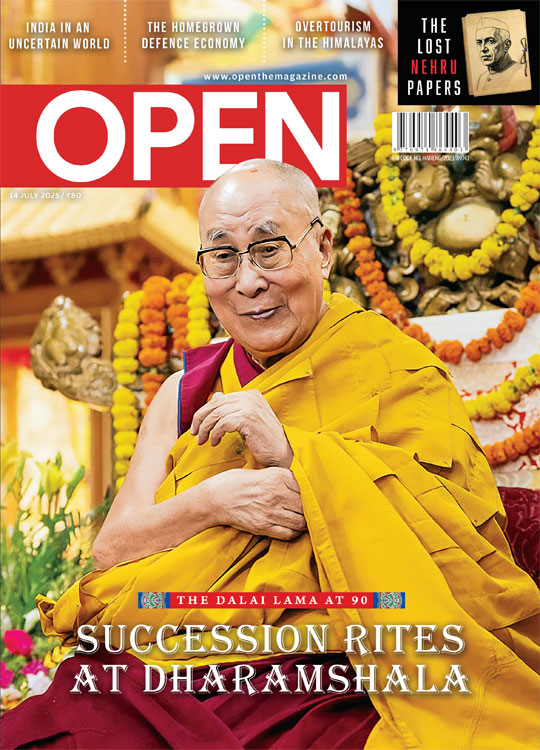


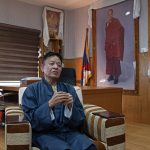
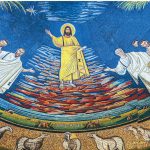
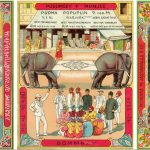
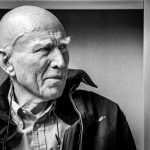

More Columns
India’s First Vision-Only Autonomous Car Was Built for Chaos Open
Trump Restarts Tariff War With the World Open
‘Why Do You Want The Headache of Two Dalai Lamas’ Lhendup G Bhutia